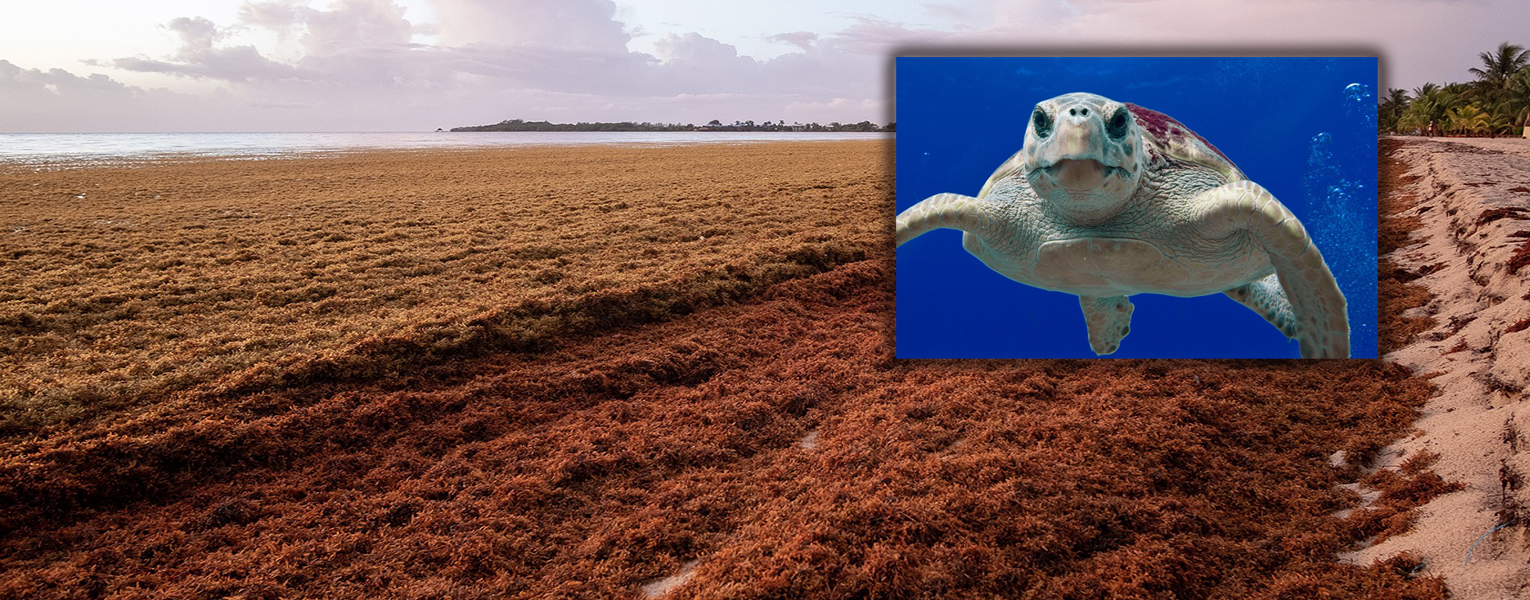10/21/2022
National Reptile Awareness Day
Too Much Seaweed Causing Problems for Sea Turtle Hatchlings
By Bethany Augliere
Sargassum seaweed floats in the ocean, providing habitat for all types of marine critters from crabs and shrimp, to baby fish and sea turtles. But during the summer months of South Florida, large mats of floating seaweed wash up on the beach and might make it difficult for sea turtle hatchlings to locate the ocean from the nest, according to a recent study by FAU researchers.
Loggerhead sea turtles — a type of marine reptile — hatch from eggs placed in subsurface nests at the beach, then emerge at night and crawl to the sea. Mike Salmon, Ph.D., a research professor in the Charles E. Schmidt College of Science, supervised a master’s student, Josh Schiariti, in a study to determine if Sargassum that accumulated on the beach acted as a barrier for the crawling hatchlings as they attempted to enter the ocean. “This study is important because the crawl from nest to the surf zone and the subsequent swim to deeper water, is a critical and vulnerable period of time for marine turtles,” Schiariti said.
To determine if this was the case, Schiariti designed two experiments with hatchlings collected as they emerged from their nests at night. The study was approved under a special permit issued by the Florida Fish and Wildlife Conservation Commission (FWC), which monitors all research on marine turtles in the state.
In one of the experiments, Schiariti released hatchlings to determine whether they could crawl over the accumulated seaweed mat on the beach that evening. “Those tests allowed him to estimate how many turtles could crawl over, around or through the algal accumulations that varied in density and elevation from one night to the next,” Salmon said.
In the second set of experiments, Schiariti created seaweed mats that varied in elevation and then released the hatchlings on the beach where they would encounter those mats. These observations enabled him to more precisely determine the probability that hatchlings encountering an algal barrier of specific height could navigate across it to reach the sea.
Over the span of 43 evenings, Schiariti found that there was a 22% reduction in the number of hatchlings that successfully crawled over the natural accumulations of seaweed at Boca Raton’s nesting beach. These results were recently published in the Journal of Coastal Research. Of the 12,730 hatchlings that emerged from the nests that year, only an estimated 9,930 made it to the ocean. Additionally, the researchers found that barriers exceeding 8 inches in elevation significantly reduced the ability of the turtles to reach the ocean, and those exceeding 12 inches were a complete barrier.
Schiariti also recorded how the hatchlings behaved when they encountered the seaweed barriers. Some crawled along the edge until they became exhausted, some turned away from the sea and crawled inland, and some fell backward after attempting to climb over the Sargassum. Even if some of the hatchlings did eventually find the sea, in the process they spent more time on land where they were vulnerable to terrestrial predators such as night herons and ghost crabs.
Over the past 20 years, Sargassum blooms have been increasing in duration and geographic extent, said Salmon. The cause is extensive nutrient runoff from agricultural fertilizers and human waste, transported by rivers to the ocean “These blooms represent a symptom of how we are increasingly upsetting balances in natural ecosystems,” he said, “and in the process causing immense harm to the planet and its inhabitants.”
If you would like more information, please contact us at dorcommunications@fau.edu.
